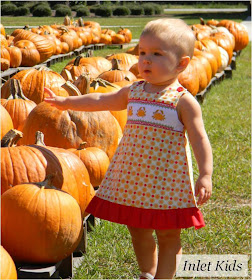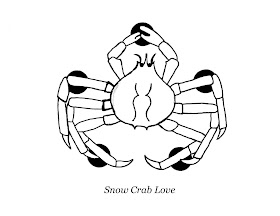Happy World Animal Day!
I didn't know about this day until I looked at my calendar yesterday and saw it written in (below the First Quarter moon picture). World Animal Day is celebrated every year on October 4th - yet another reason to love October (you know: fall, leaves changing colors, all the squash you can eat, snow coming down the mountains, and HALLOWEEN!!!).
To celebrate World Animal Day, I thought I'd take a little inspiration from my Halloween decorations:
from Martha Stewart's Halloween craft collection
and turn it into a crab-tastic piece that's both fun AND educational. This way you can use it for your WAD party (I'm sure you're having one) as decor, a conversation starter, and a way to learn a little bit more about the animals I love: crabs!
Why am I making a ball out of crabs? Red king crab (Paralithodes camtschaticus) exhibit a podding behavior during the day, balling up with hundreds of their friends (they meander off at night to find dinner).
that's a whole lotta red king crabs!
See where I'm going with this? What you'll need to do is print out 12 of these for a king crab pod:
imagine all the colors you could use for this! Red, blue, golden...
Now the fun starts: connect three crabs together at one of the 5 points with a brad. I like to work around one main crab until I have 5 attached around him, leaving me with 6 total connected.
3 crabs joined together at one of the 5 points
6 connected (5 surrounding the main crab)
Next, take your 6 crabs and form them as a bowl in order to be able to attach 5 more crabs. Again, each point will connect 3 crabs.
joining 2 points in order to add
a third crab to this joint
the blue "brads" are where the original crabs
from the first group of 6 are joined together
to add a new layer of crabs;
the red "brad" is where the new layer of
crabs are connecting to each other
The last crab is the trickiest, but once he's on you'll have a wonderful, 12-strong pod of kings!
ready to hang for your WAD party!
Read about podding king crabs off of Kodiak, AK:
Dew, C. B. 1990. Podding behavior of red king crab, Paralithodes camtschatica. Canadian Journal of Fisheries and Aquatic Sciences 47: 1944-1958.








































